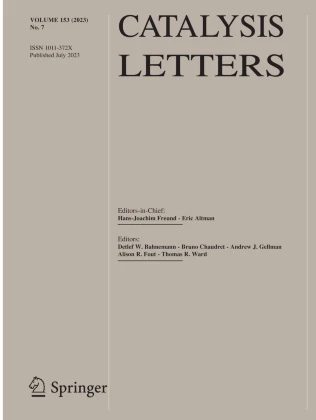Synergistic Removal of NO and Chlorobenzene on CeO2 Catalyst in a Dielectric Barrier Discharge Reactor at Low Temperature
Abstract
The development of new technologies for removal of NO and chlorobenzene in complex flue gas situations at low temperature is a complex and demanding task. Here, the synergistic removal of NO and chlorobenzene was achieved through catalysis assisted dielectric barrier discharge (DBD) mechanism under different conditions. The experimental results suggested that the increase of specific energy density (SED) and the loading of CeO2 strengthened the treatment of NO and chlorobenzene. A higher degradation efficiency of NO and a lower production rate of NO2 were achieved after the introduction of chlorobenzene. The removal of chlorobenzene could also be benefited from this process, and the introduction of NO promoted CO2 selectivity of chlorobenzene. The XPS and H2-TPR analyses confirmed that the reaction between chlorobenzene and NO occurred by the assistance of Ce3+/Ce4+ redox cycle as well as the consumption and regeneration of chemically adsorbed oxygen. During the reaction, the oxygen vacancies (OVs) caused by plasma etching promote the redox cycle and alleviate the catalyst poisoning caused by chloride ions (Cl−). Furthermore, a comprehensive analysis of the resulting byproducts revealed phenol as the most significant intermediate in chlorobenzene degradation, while acetaldehyde emerged as the major product resulting from ring-opening processes of chlorobenzene. Utilizing chlorobenzene from flue gas subtly, this method presents a more sustainable alternative for NO reduction, showing promise for addressing industrial emission challenges.
Graphical Abstract

 求助内容:
求助内容: 应助结果提醒方式:
应助结果提醒方式:


